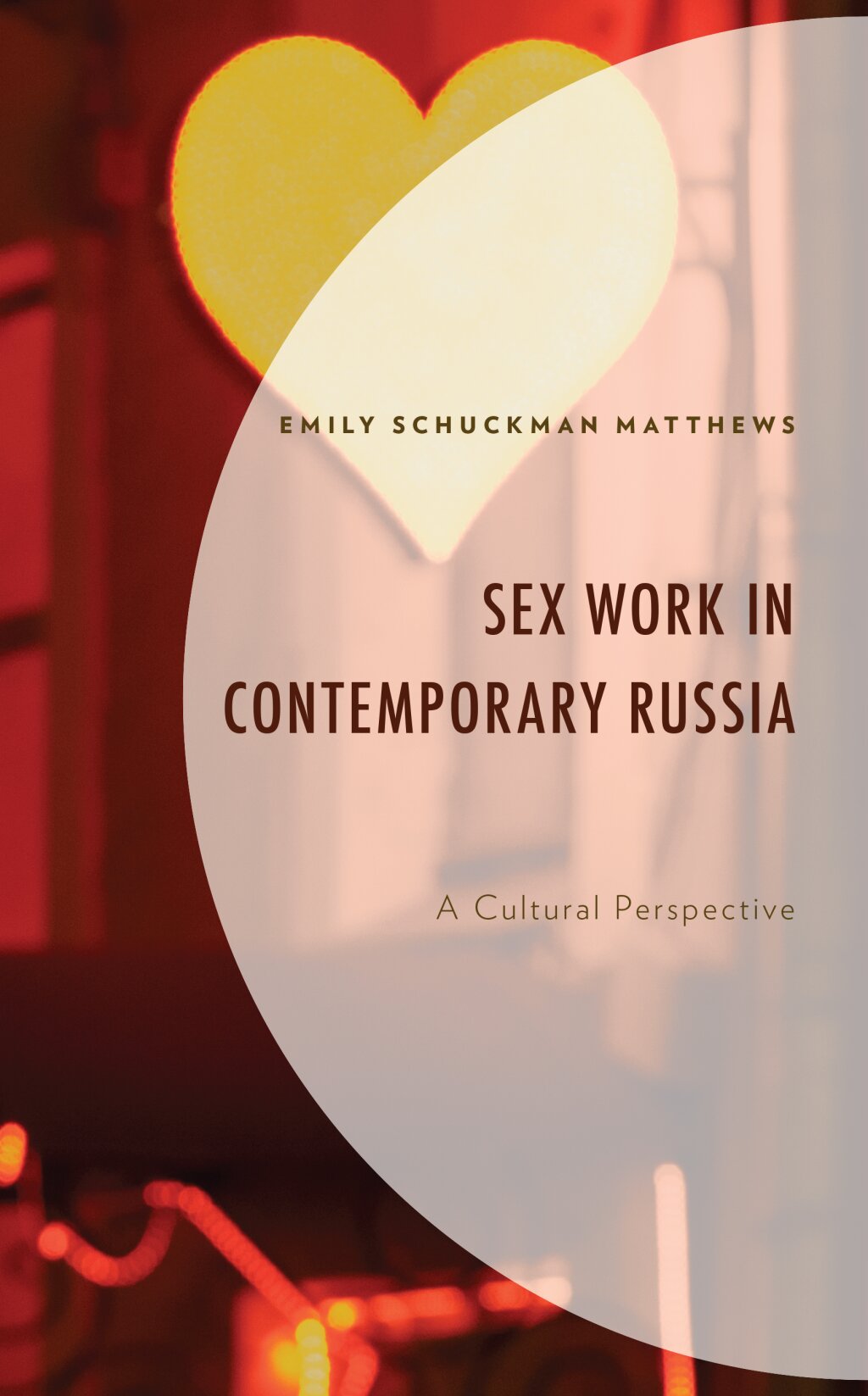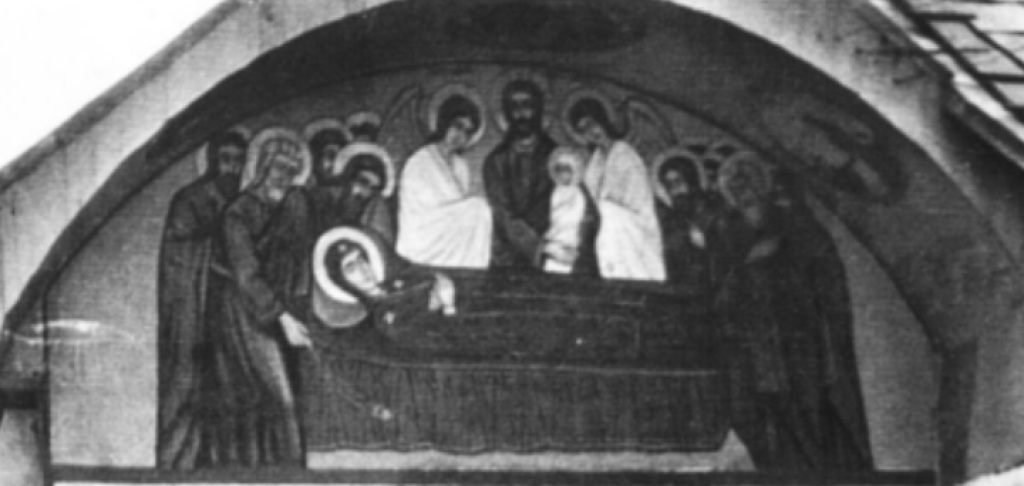The Jordan Center stands with all the people of Ukraine, Russia, and the rest of the world who oppose the Russian invasion of Ukraine. See our statement here.
This week, the Blog is pleased to feature a three-part series of excerpts from Emily Schuckman Matthews' Sex Work in Contemporary Russia: A Cultural Perspective, out now from Lexington Books. This is Part III; Part I may be found here, and Part II is here.
Emily Schuckman Matthews is associate professor of European Studies at San Diego State University.
A history of pre-revolutionary fictional prostitutes in Russia
This section offers a brief historical overview of fictional representations of the prostitute in Russia from the nineteenth century to the revolution. The texts examined in the larger book are largely written or produced after 1917, so this survey is designed to provide a foundational background for the reader prior to delving into works of the twentieth and twenty-first centuries. Many of the tropes established and explored by authors in Imperial Russia lay the foundation for depictions of the character in the twentieth century and to the present day creating a noticeable dialogue between the past and present. Given the popularity of the fictional sex worker in early Russian literature, I cannot possibly offer an all-inclusive listing of works, but opt instead to mention texts that I see as pivotal in their contribution to representative models of the character. For an excellent exploration of the fictional prostitute in the nineteenth century, please see Colleen Lucey’s book Love for Sale: Representing Prostitution in Imperial Russia. For historical insights into the legality and social dimensions of prostitution during this period, see Siobhán Hearne’s Policing Prostitution: Regulating the Lower Classes in Late Imperial Russia and Laurie Bernstein’s Sonia’s Daughters: Prostitutes and Their Regulation in Imperial Russia.
Prostitution existed in Russia for several centuries but became a widespread phenomenon during Peter I’s rule (1683–1725), with the first brothel or “public house” reportedly established by a German in the 1750s. Undoubtedly, prostitution existed in Russia prior to this time, but its linkage to the influx of Western ideas during Peter’s reign, and crediting the first brothel to a non Russian, set up an important pattern of identifying prostitution and its social and symbolic implications with a Western, and not Russian, value system. Catherine the Great was reportedly the first of the Russian leaders to regulate prostitution for the sake of disease prevention, submitting women in the sex industry to regular doctor’s exams, while her son Paul forced so-called “public women” to wear yellow dresses in order to identify their profession.
It was not until 1843, under Nikolai I’s rule, that prostitution came under legal regulation by the government with the state-issuance of yellow tickets to registered prostitutes and public scrutiny of the sex industry. Not only did these women have to identify their profession to the world, but their intimate health issues also became public during the routine medical inspections. The prostitute’s health, lifestyle, and the validity of her existence was open for scrutiny and debate. This legal and social context with rapidly growing urban areas serves as the backdrop for most nineteenth-century and early twentieth century literary works featuring fictional sex workers.
According to George Siegel’s analysis of the “fallen woman” in Russian literature, Nikolai Gogol’s short story “Nevsky Prospect” (1835) established the basis for all literary prostitutes in Russia. Gogol tells the story of a young artist, Piskaryov, who, while strolling with his acquaintance Lieutenant Pirogov, spots two beautiful women walking at dusk along St. Petersburg’s main boulevard, Nevsky Prospect. The mischievous Pirogov convinces his friend that they should each follow one of the women and see what happens. Piskaryov trails his lady through a labyrinth of dark streets and alleys until they end up in a brothel, where he is horrified to find she lives. He flees the “repulsive den of iniquity” and spends the next several days smoking opium, dreaming fitfully about her fate, and thinking of how to rescue her. The protagonist imagines the young woman as a pure and sweet angel and fantasizes about marrying her. When he finally executes his rescue plan, he is horrified when she rambles on ineloquently about her drunkenness the night before and her all-night rendezvous with a client. She immediately shuns the domestic tableau he envisions, which has her sitting serenely with her sewing and him doting on her: “I am no washerwoman or seamstress, to be putting myself to work.” Distraught and crushed by the collapse of his dream, Piskaryov slits his throat and is found dead in his apartment.
Many themes in Gogol’s story—the prostitute’s external beauty; the naïve and idealistic youth wanting to save her; the vicious reality of some of the women’s lives and personalities; and the portrayal of the prostitute as an inherently deviant woman—are still found in contemporary representations of the character. The idea of saving women by giving them sewing machines (or engaging them in other forms of manual labor) is another theme oft repeated. Most notable is Nikolai Chernyshevsky’s 1862 novel What Is to be Done? (Chto Delat?) which tells the story of Vera Pavlovna and her establishment of sewing collectives that lift women from poverty and “save” them from the horrors of prostitution through positive, communal work.
Siegel notes that the depiction put forth in “Nevsky Prospect” and its imitations sparked a reactionary depiction of the prostitute in the form of angelically pure creatures. Fyodor Dostoevsky’s Sonia Marmeladova from Crime and Punishment (1866) becomes the ultimate symbol of this valorized and exalted “fallen woman.” In Crime and Punishment, Dostoevsky reverses the gender roles in the “rescue” storyline, casting Sonia Marmeladova as the self-sacrificial savior of the young student-murderer Raskolnikov. This depiction, which draws so heavily on the association between woman and nation and woman as protector of culture, is perhaps the most salient in Russian literature. While Gogol’s “Nevsky Prospect” is an enduring text, it is Dostoevsky’s model of feminine purity and moral piety, not Gogol’s crass whore, that endures to the present day in the prostitute-with-a-heart-of-gold trope. As implied by the title of Bernstein’s book, Sonia Marmeladova acts as sort of mother figure to all fictional prostitutes in Russia, continually evoked in contemporary fictional and analytical texts about sex work in the country.
Turn-of-the-century Russia, with its decadent movements, produced a range of works depicting sexually-free women, some of whom were in the sex industry and some of whom were not. Colleen Lucey notes that in the latter half of the nineteenth century, portrayals of the fictional prostitute became increasingly associated with “the woman question.” During this period, wide-ranging public and intellectual discourse concerned with women’s education, emancipation, position in the home and society would be subsumed under the label of “the woman question,” a term used to describe debates about women’s rights up to the present day. At the dawn of the new century, as the country moved toward revolution, many works became more fervent in their attempt to illuminate social and political challenges in this turbulent time, often utilizing the sex worker as a vehicle for social commentary.
Aleksandr Kuprin’s The Pit (Iama), published in two parts in 1909 and 1914, elides themes from nineteenth-century portrayals of the prostitute with more progressive portrayals of sex workers and the community of women living and working in a brothel to reflect the greater possibilities for the character in the new millennium. Kuprin explores themes of redemption, with one girl being “rescued” by a young student only to later return to the brothel; the rising fear of disease with one prostitute intentionally infecting clients she despises with syphilis; and the political debates about women’s rights and revolution swirling among intellectuals. The novel takes place in the provincial backwater town known as “Iama,” a town dominated by brothels, with the primary narrative set in “the second-rate, two-ruble establishment” run by proprietress Anna Markovna.
Kuprin removes his prostitutes from the ethereal realm inhabited by Sonia and moves them into the very real public world, grounding their work and their bodies with a tangible corporeality that will become increasingly common in literature and cinema of the twentieth century. He also endows his female characters not just with bodies but with voices and opinions. Providing powerful insight into prostitution as existing in a sort of liminal space of public ownership, acceptance, and scorn, one sex worker, Jennie, explains: “I—am nothing; I—am a public wench! Do you understand . . . what a horrible word this is? Public! . . . This means nobody’s: not papa’s, not mamma’s, not Russian, not Riyazan, but simply—public. Sometimes blurring the line between fact and fiction, the novel is filled with direct and indirect commentary on the role of sex work in Russian culture. In a dialogue between the young journalist Platonov, largely understood to be Kuprin’s alter-ego, and a student, Ramses, the author comments on past representations of the prostitute in Russian literature:
Platonov: Russian artists of the word—the most conscientious and sincere artists in the whole world—for some reason have up to this time passed over prostitution and the brothel.
Ramses: But they do write!
Platonov: “They do write,” . . . But it is all either a lie, or theatrical effects for children of tender years, or else a cunning symbolism, comprehensible only to the sages of the future. But the life itself no one as yet has touched.
Platonov continues: The fate of the Russian prostitute—oh, what a tragic, piteous, bloody, ludicrous and stupid path it is! Here everything has been juxtaposed: the Russian God, Russian breadth and unconcern, Russian despair in a fall, Russian lack of culture, Russian naiveté, Russian patience, Russian shamelessness.
Kuprin does not portray his sex workers and the men who visit them as highly symbolic or morally pious, but rather as everyday people, real people. While depictions of actual sex were still decades in the future of Russian writing, Kuprin takes us much closer to the reality of these women’s professions and largely portrays commercial sex as unappealing and far from erotic.
The heroines of Kuprin’s novel all meet unhappy ends. The brothel falls into shambles and Iama itself, the little town of whorehouses, fades into oblivion as the yellow ticket system is abolished and the brothels closed. Despite the death of Kuprin’s heroines, their fates do not read like moral condemnations of them as people. Rather, their deaths are a condemnation of society for letting them work in this profession. Kuprin’s prescient portrayal of the end of government-regulated prostitution and the blend of literary flourish and social commentary in his novel marks it as a pivotal work in pulling back the curtain of the brothel to imbue its occupants with a humanity that their more ethereal nineteenth-century counterparts lacked.
The yellow ticket system remained in effect until 1917, when it was finally discarded by the Provisional Government. The new revolutionary leadership was convinced that the capitalist, bourgeois system was responsible for prostitution and considered it one of the most exploitative aspects of the old regime, depriving women of their right to full participation in the workforce and social life. Lenin and the Bolsheviks were committed to eradicating prostitution by engaging women in the labor market.
The chapters in my book offer insight into not only fictional representations of sex work after the revolution and through the twenty first-century but will illuminate realities faced by women in a constantly changing, frequently tumultuous, and persistently patriarchal Russia. Whether through primary texts that specifically engage with the minutiae of the everyday or secondary sources that situate materials in the broader context of lived realities, the centrality of women’s byt (быт, daily life) and experiences are a central aspect of each chapter.
Natasha Tolstikova and Linda Scott describe byt as referring not only to the “banality of everyday life” but “implicitly recogniz[ing] the broader cultural, governmental, and ideological dimensions of daily life.” It is this understanding of byt that has led in recent years to a reclamation of the realm of byt as a space for authors and scholars to examine women’s lives in particular, in order to highlight “cultural anxieties and the sociopolitical factors creating them” as well as emphasize specific spheres of feminine resistance to the dominant patriarchal structure of Russian society. Women’s byt is prioritized in this book not only because texts by, about, and for women often focus on the topic but also because the daily life of sex workers in particular is often examined as emblematic of the more exploitative aspects of average women’s lives in Russia.
As each chapter will illustrate, Russians time and time again turn specifically to the sex worker’s byt as a discursive space to explore anxieties associated with the changing nation, capitalism, women’s liberation, and “the woman question” more broadly. Reasons for this might be explained by what Benjamin Sutcliffe describes as “Russian culture’s enduring uneasiness concerning the everyday and female experiences” and the debasement of byt through (masculine) high culture’s association between the everyday and poshlost, the Russian term for the banal realm of “soul-killing” materialism. Strongly associated with low culture and poshlost, the female sex worker offers a vessel through which creators can explore the lives of marginalized others whose byt, marked by a constant negotiation with the market, is both an offense to perceived high culture and a reflection of reality for many.




